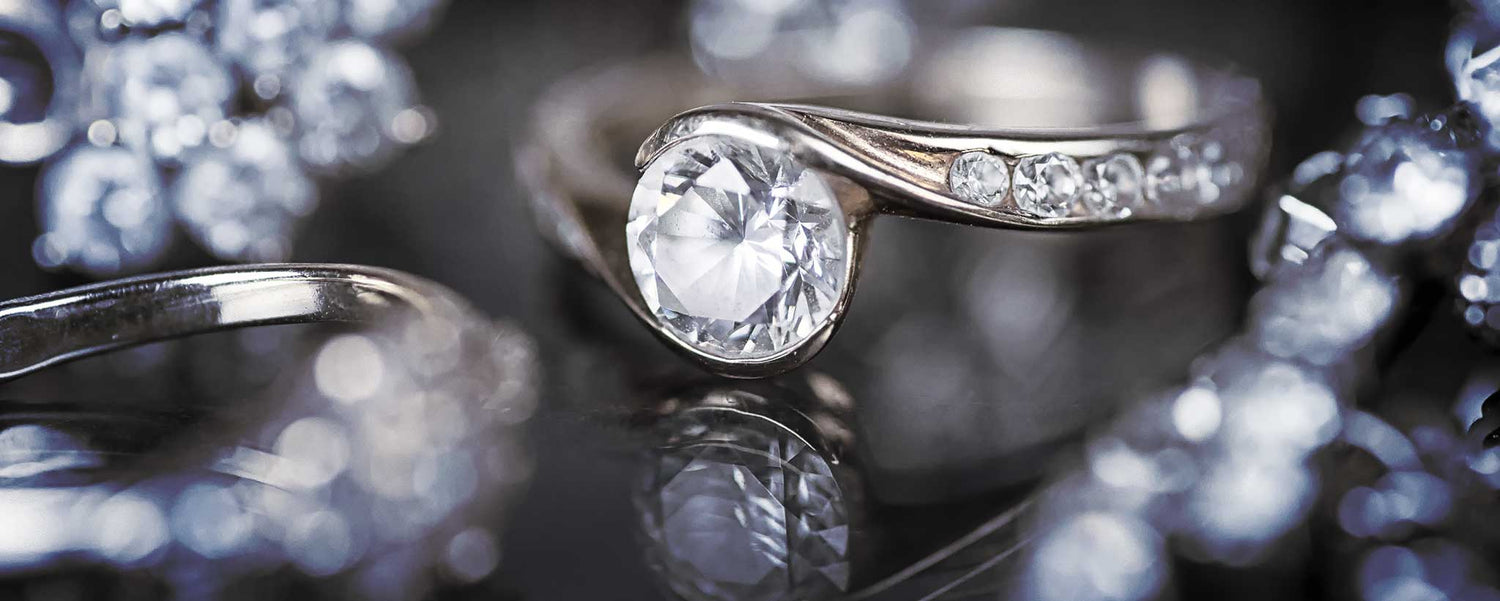Grading The Quality of Gemstones
Among the 21 birthstones spread over 12 months, diamonds are the hardest and most popular gems. De Beers is the diamond company that invented modern advertising and consumer psychological testing. We have been thoroughly indoctrinated with the notion that diamonds are the most valuable things on the planet. They are associated with love, eternity, and marriage.
Substitutes of varying degrees of quality are available. Cubic Zirconia (CZ) is commonly thought to be the only imitation. But CZ, or zircon, comes in several grades, and you can purchase both less and more expensive alternatives to CZ. Various attributes determine the value and ideal use of diamond alternatives.
Hardness is defined as a material’s resistance to permanent indentation (scratches) on the Mohs scale, developed by German mineralogist Friedrich Mohs in 1812. Generally speaking, 7 or higher on the Mohs scale usually indicates a gem is hard enough for normal jewelry use, but there are exceptions.
Wearability can be excellent, very good, good, poor, or display only. Most gemstones would be considered “brittle,” as measured by tenacity (resistance to blows). Though a diamond is the hardest gem known to man, it is paradoxically brittle. Hence, its setting often includes prongs around the circumference for protection. Quartz is less hard than diamond but can take considerable blows without damage.
| Gemstone | Production | Hardness |
|---|---|---|
| Diamond | Natural | 10 |
| HPHT Diamond | Cultured | 10 |
| Moissanite | Synthetic | 9.25 |
| Carbon Coated CZ | Synthetic | 9.1 |
| White Sapphire | Synthetic | 9 |
| Cubic Zirconia | Synthetic | 8.5 |
| Quartz | Natural | 7 |
| Glass | Synthetic | 5.5 |
| Plastic | Synthetic | 2 |
Cultured diamonds are identical to natural diamonds except for a laser-imprinted serial number. They increase the availability of rarer natural diamonds at a slightly lower cost. They also open the opportunity for chocolate or tinted diamonds.
Synthetic moissanite has the same properties as very rare natural moissanite (discovered in 1893 by Henri Moissan). With more disco-light fire than diamonds, moissanite is nearly as hard. In the late 1980s, the synthesis of moissanite and loose moissanite stone was finally achieved. In 1997, Charles & Colvard® began to market synthetic moissanite jewelry and moissanite loose stones. An average one-carat diamond costs about $1500, whereas a one-carat moissanite loose stone may cost around $300 and up, depending on the cut—an 80 percent savings.
Cubic Zirconia stones are rated from A to AAAAA. A is the Lowest Quality, while AAAAA is the highest grade CZ available. The rating system is based on several variables, the same Four Cs used to determine the quality of diamonds: Cut, Clarity, Color, and Carat.
A Grade CZ Stones—Lowest quality grades of Cubic Zirconia are used by craftsmen and artists for embellishing their creations.
AAA Grade CZ Stones—More highly polished than A-grade stones with better luster and shine, used to create reasonably priced jewelry.
AAAAA Grade CZ Stones—Crafted by the best stone cutters and polished just like any top-rated diamond would be. They can resemble diamonds but are not as durable, eventually losing sparkle, so are not recommended for rings worn every day.
Most people do not spend thousands of dollars for each piece of jewelry. They may have a few nice items augmented by lesser-quality costume jewelry. This minimizes financial liability in the event of loss while providing a wider range of gems to wear year-round.
ClinicalPins include low-cost gems designed to wear to work. Most are alloy metals. Also available are stainless steel, sterling silver, silver and gold plating. The stone of choice for most pins is AAA or AAAAA grade CZ.





